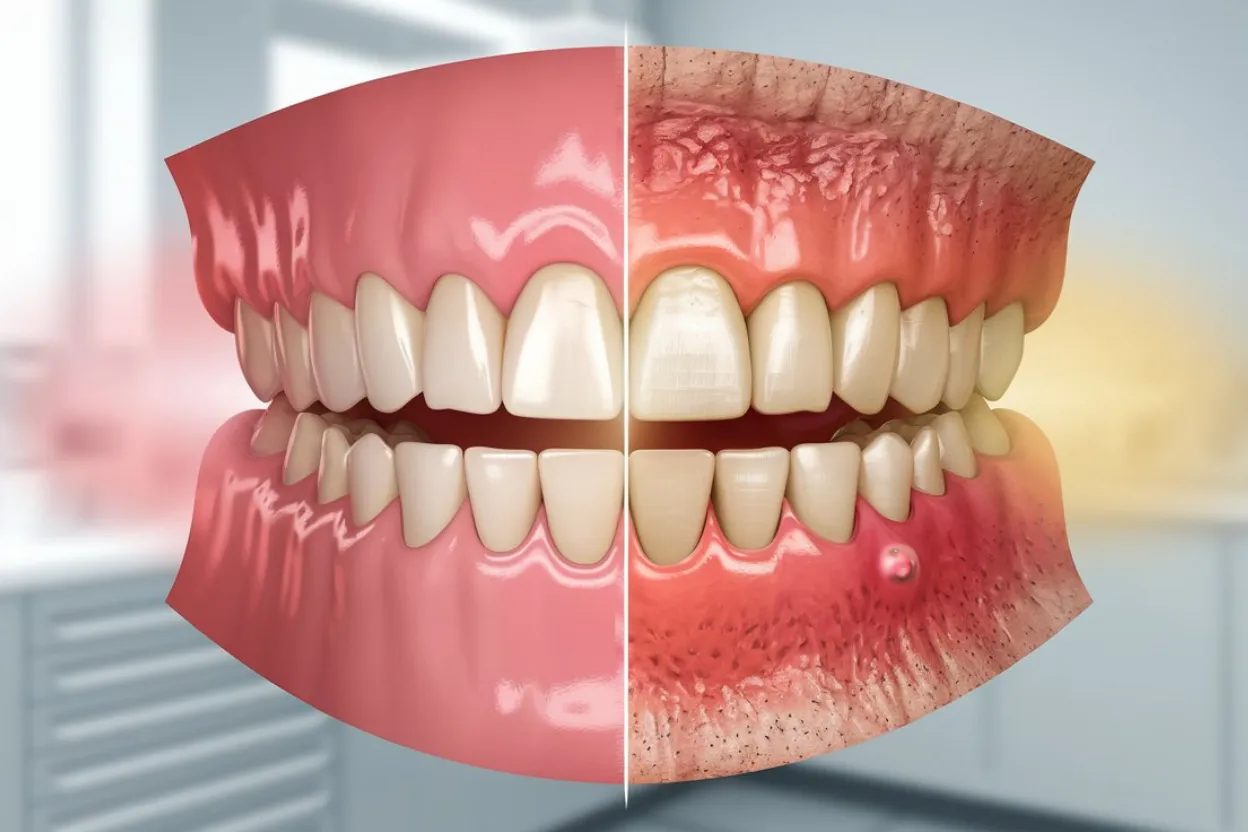Healthy gums aren’t just for show—they’re what keeps your teeth in place and your mouth in good shape. When your gums get inflamed or infected, it’s not just about looks. Gum disease is sneaky. It starts small, but if you let it go, it can wreck the bone and tissue that hold your teeth. The thing is, gum disease is super common in adults, but it’s also one of those things you can actually prevent.
If you want to keep your teeth for life, you need to know how gum disease starts, what it does, and how dentists can treat it.
So, what exactly is gum disease?
Gum disease (or periodontal disease) is basically a bacterial infection that targets your gums and the stuff that supports your teeth. It usually starts as gingivitis—that’s when your gums look red, get puffy, and maybe bleed when you brush. Gingivitis is the early stage and, honestly, it’s not that hard to fix if you catch it. Clean your teeth, keep up with brushing and flossing, and your gums bounce back.
But if you ignore it, things get worse. That’s when periodontitis sets in. Now the infection digs deeper, messing with the bone and tissue underneath. The gums start pulling away from your teeth and create pockets that collect even more bacteria. If you keep putting off treatment, your teeth can get loose or even fall out.
What causes all this?
Mostly, it’s plaque. That sticky film of bacteria that’s always forming on your teeth. If you don’t brush or floss enough, it hardens into tartar, which really irritates your gums. But plaque isn’t the only thing that speeds up gum disease. Smoking, chewing tobacco, hormonal changes (like pregnancy or menopause), diabetes, immune problems, poor nutrition, stress, and your genetics all play a part too.
If any of that sounds like you, regular dentist checkups aren’t optional—they’re essential.
How do you know if something’s wrong? Watch out for these signs:
- Your gums bleed when you brush or floss
- Bad breath that just won’t quit
- Gums pulling back (your teeth start to look longer)
- Swollen or sore gums
- Loose or shifting teeth
- Pus between teeth and gums
A lot of people shrug off these symptoms until things get really bad. By then, bone loss has usually started.
Here’s how gum disease creeps up on you:
First, plaque shows up and forms a soft layer on your teeth. Your gums get inflamed and bleed easily. If you still don’t clean things up, plaque hardens into tartar. That’s when gums start detaching from your teeth, and those pockets form. Bacteria move in, the infection spreads to your jawbone, and you start losing the support that keeps your teeth in place. If you don’t get treated, you can end up losing teeth.
So, what can dentists do about it?
1. Scaling and Root Planing
This is a deep cleaning where the dentist gets rid of plaque and tartar below the gumline. They’ll smooth out the roots so your gums can start reattaching. Usually, they’ll numb the area so you don’t feel much.
2. Laser-Assisted Gum Therapy
Dentists can use lasers to zap away infected tissue and kill bacteria without bothering the healthy parts. It’s less painful, you heal faster, and there’s hardly any bleeding.
3. Surgery
If the pockets get really deep (more than 5 or 6 millimeters), you might need surgery. Sometimes, they’ll lift the gums to clean way down deep or even add bone or tissue grafts to rebuild support. There’s even a technique that helps your bone grow back if you’ve lost a lot.
4. Maintenance
After the main treatment, you’ll need to see your dentist every 3 or 4 months for professional cleanings. This is huge for stopping bacteria from coming back.
Technology’s made a big difference, too. Dentists now use digital probes to measure pocket depth, ultrasonic scalers that use gentle vibrations and water instead of scraping, and even AI-powered X-rays to track bone changes over time.
Once you’ve had treatment, you still need to step up your home care:
- Brush twice a day with a soft brush
- Use tiny brushes to clean between wider gaps
- Rinse with antibacterial mouthwash (sometimes your dentist will prescribe a strong one)
- Don’t smoke—it seriously slows down healing
- Keep up with regular checkups
Lifestyle tweaks help, too:
- Eat foods rich in vitamin C and calcium
- If you have diabetes, keep your blood sugar steady
- Drink water to keep your mouth moist
- Keep stress under control—it helps tamp down inflammation
The good news?
If you catch gum disease early and stick with maintenance, you can reverse it or at least keep it under control for good. Most adult tooth loss isn’t from cavities—it’s from gum disease that got ignored too long. With steady care and regular dentist visits, you can keep your teeth.
Bottom line:
Gum disease moves in quietly, but it can do real damage if you turn a blind eye. The treatments dentists use today—deep cleaning, lasers, and regular maintenance—can stop it and even reverse the harm. Healthy gums don’t just make for a good smile—they help keep your teeth strong and even play a part in your overall health.



